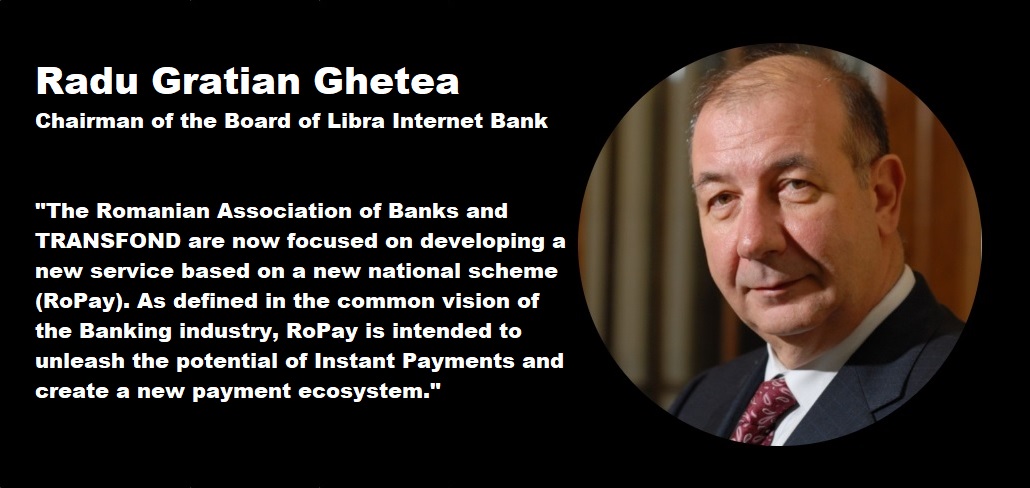
Although not in the Eurozone, the Romanian banking community has adopted SEPA standards (SCT and SCT Inst) even for payments in local currency. Financial inclusion in Romania has seen an increase from 57.64% in 2017 to 69.12% in 2021 (statistics refer to bank account ownership among people over the age of 15).
In the last years we have seen major banks migrate to instant payments (IP), and new additional services for IP arise: Alias Pay (a centralised proxy service) to enable payments initiation using a mobile number, and SANB (Confirmation of Payee) to strengthen trust in IP and online payments in general, said Radu Gratian Ghetea – currently serving as the Chairman of the Board of Libra Internet Bank and as Honorary Chairman of the Romanian Association of Banks – in an interview with The European Payments Council.
What are the main developments in the Romanian payments sector since its launch?
Since the launch of IP in 2019 ten banks have joined, namely Banca Transilvania, CEC Bank, Libra Internet Bank, Banca Comercială Română, Patria Bank, Vista Bank, Raiffeisen Bank, BRD Groupe Société Générale, Intesa Sanpaolo Bank, and ING Bank. The combination of these PSPs today cover more than 70% of the Romanian retail payments market.
In terms of IP transaction volumes, at the end of 2021 there was an increase of 27% compared to the previous year, from 1.113 billion transactions to almost 1.5 billion. These include cards, credit transfers, direct debits and other payment instruments.
In terms of volumes, we notice a high increase in the rate of IP: this year the volume of IP is expected to be ten times higher than in 2022, while the share of IP in total interbank payments will increase to more than 35%.
How have electronic payments evolved in Romania since the introduction of the IP System?
The IP System was introduced a few months before the influences of the pandemic became visible in statistics. For example, in Romania the total number of electronic payments (EP) increased by 21,87% between 2020 and 2021, much more than the growth rate of 14,71% in the previous year (2019/2020). Meanwhile, the number of instant payments increased 4,5 times due to the gradual implementation by banks operating in Romania. This ratio is the same for 2021 to 2022.
At the end of September 2023 we observe promising trends in both electronic- and instant payments; between September 2022 and September 2023 the total number of EP increased by 22,83%, the total number of IP increased by 7.9 times, while the total number of non-IP declined by 8,84%. For the end of this year, we expect similar trends considering the decrease of non-IP and parallel increase of IP volumes.
What developments can we expect to see in the payments sector over the coming five years?
The Romanian Association of Banks and TRANSFOND are now focused on developing a new service based on a new national scheme (RoPay). As defined in the common vision of the Banking industry, RoPay is intended to unleash the potential of Instant Payments and create a new payment ecosystem around IP as an alternative to cash and card. Simply speaking, RoPay will enable people to pay easier, instantly, using their mobile banking apps in all day situations: peer to peer, in eCommerce, in small and big shops, while using transport services, for parking services, invoices and so on… making all parties benefit from the advantages of instant payments.
Banking 4.0 – „how was the experience for you”
„To be honest I think that Sinaia, your conference, is much better then Davos.”
Many more interesting quotes in the video below: